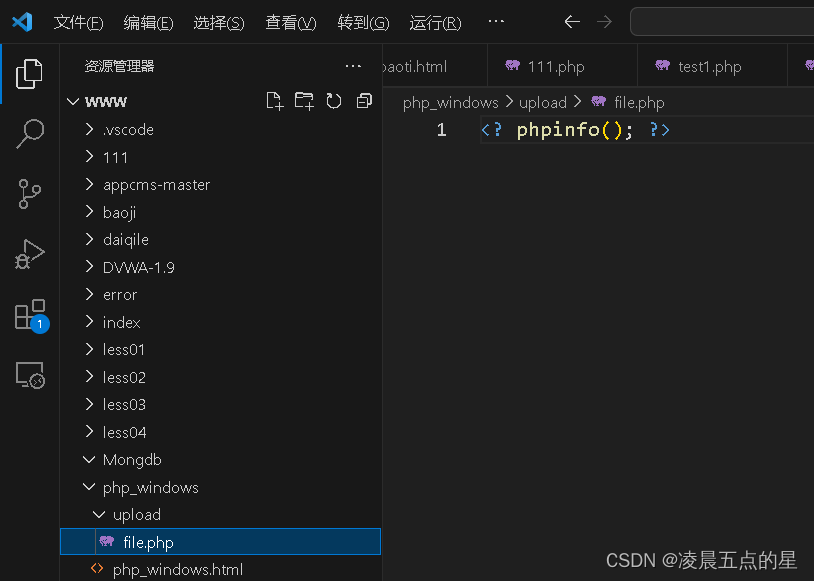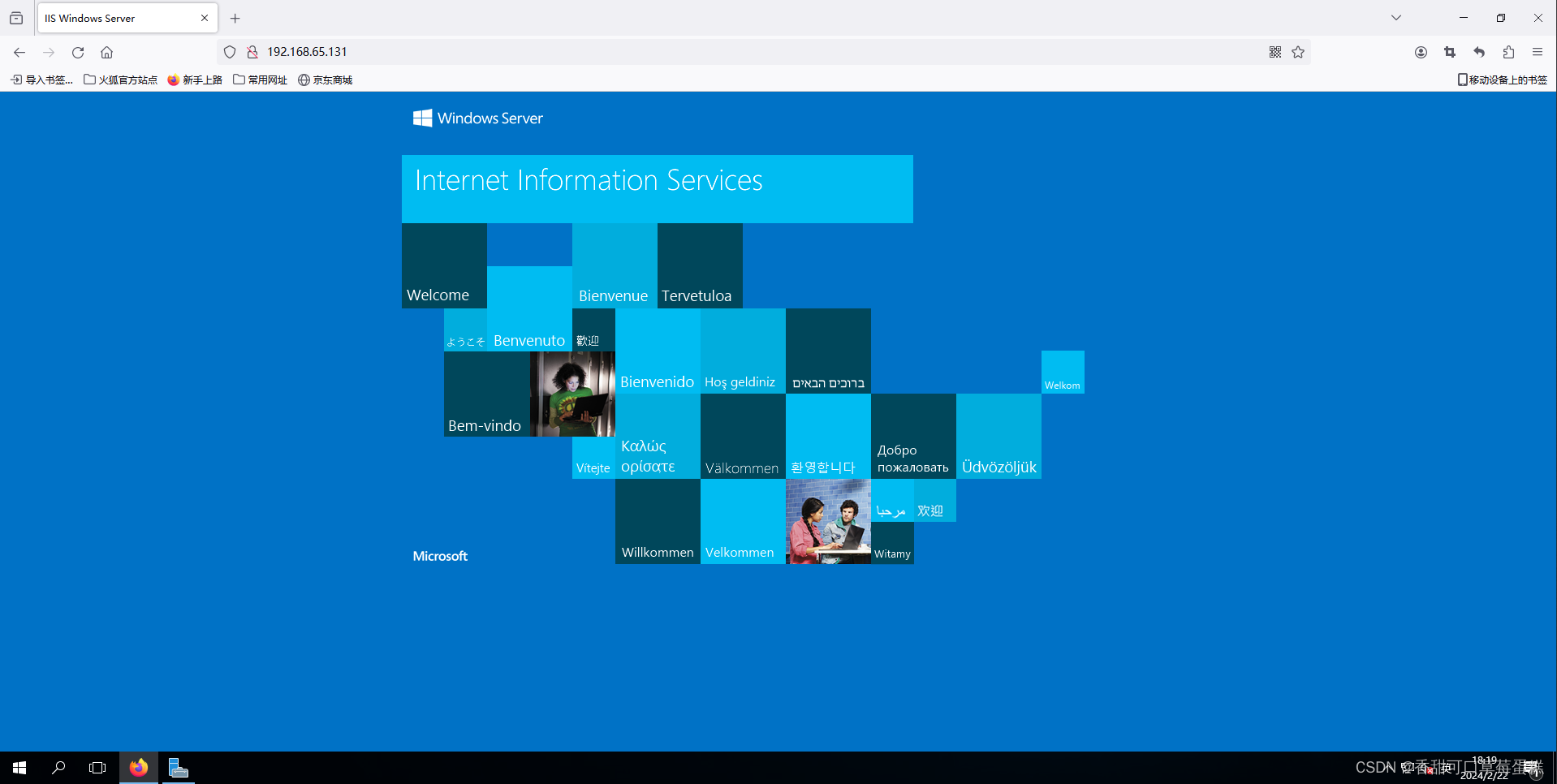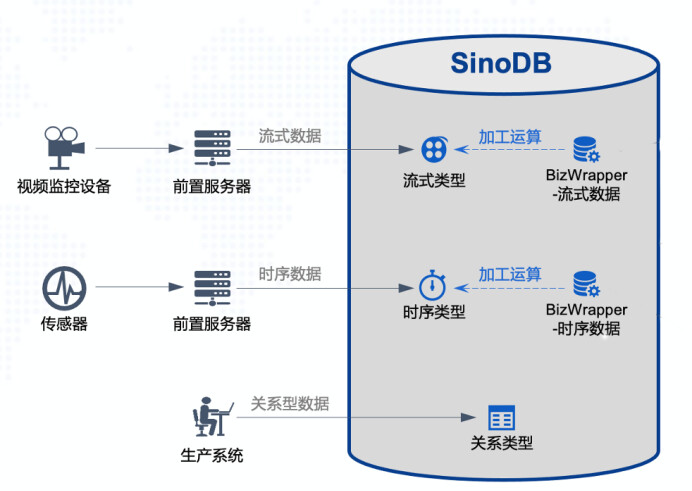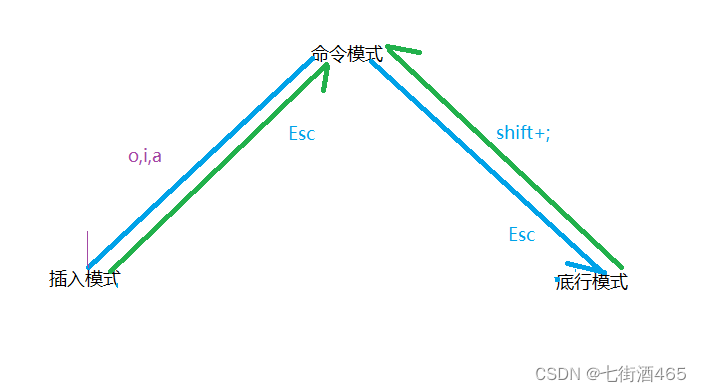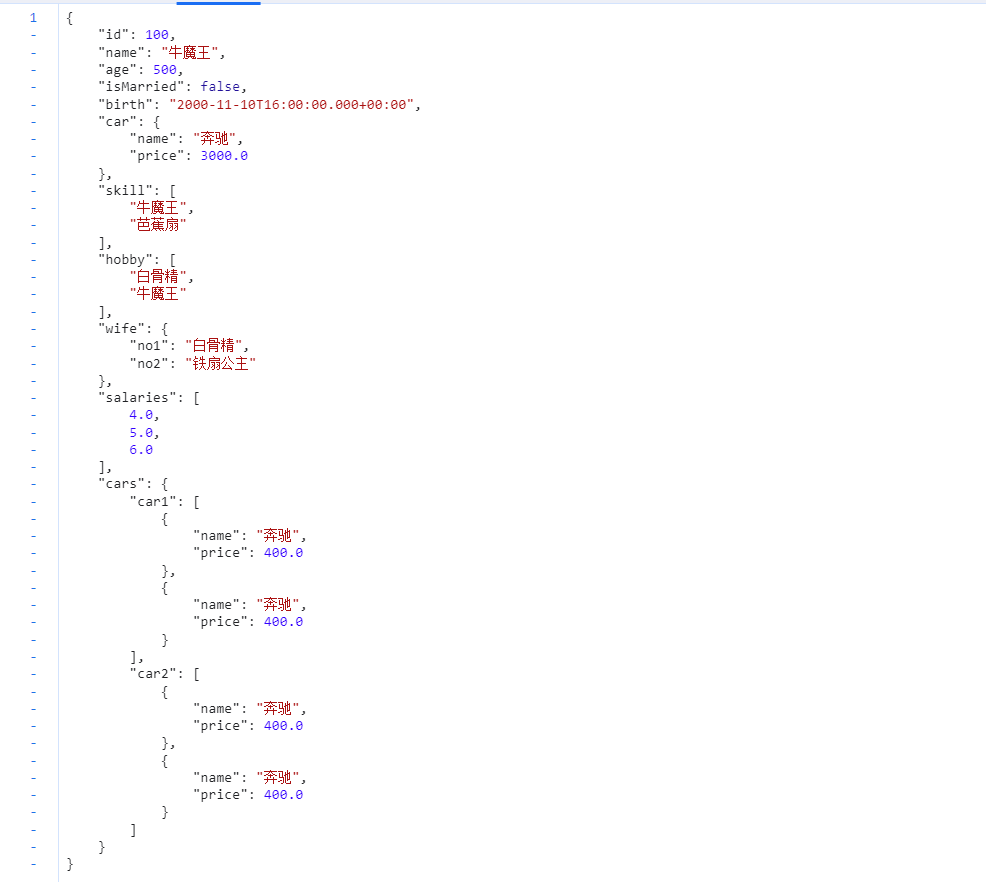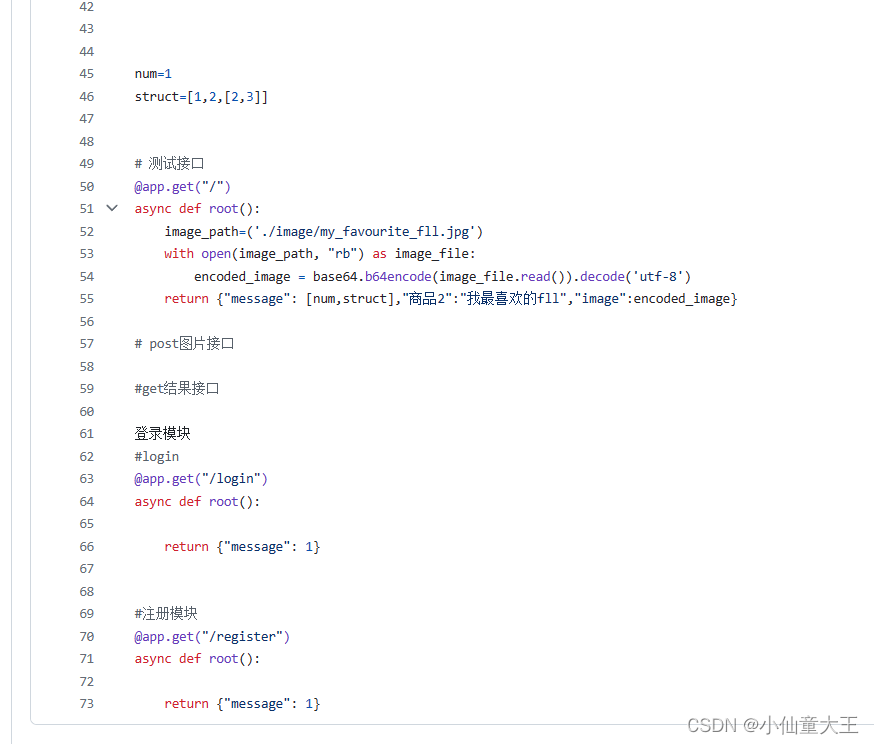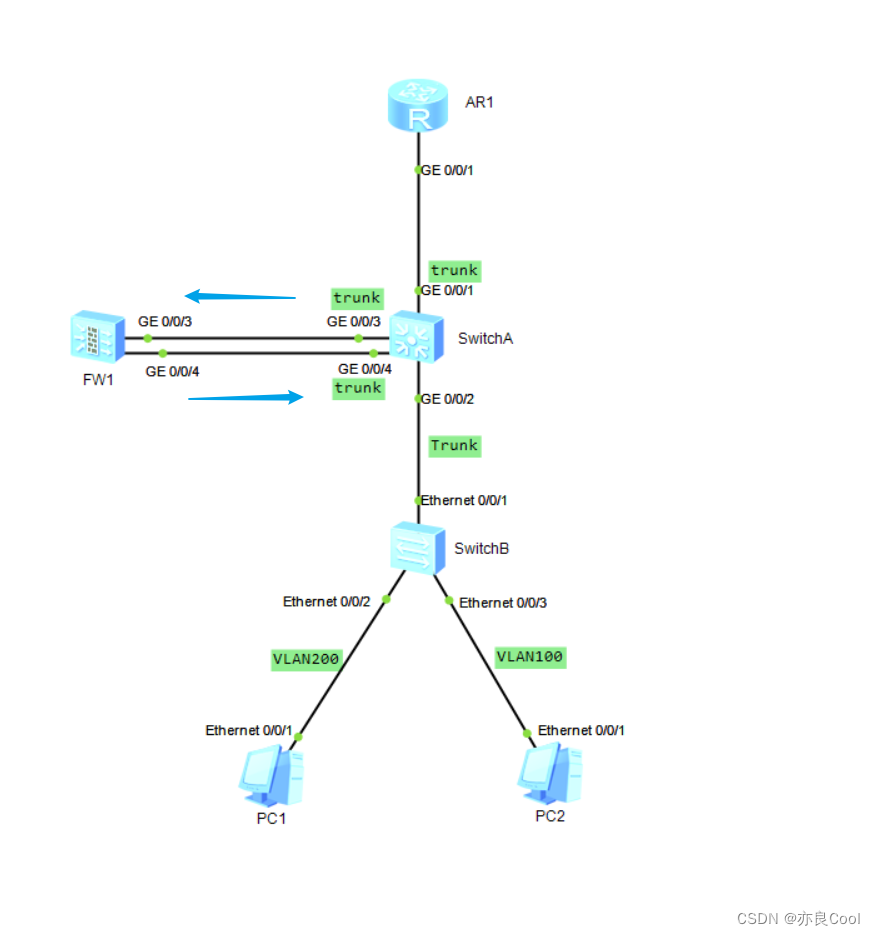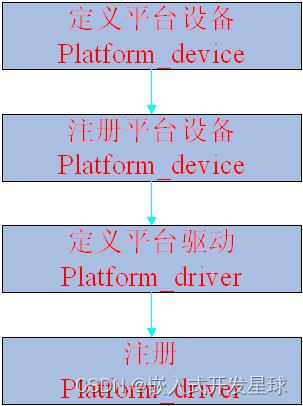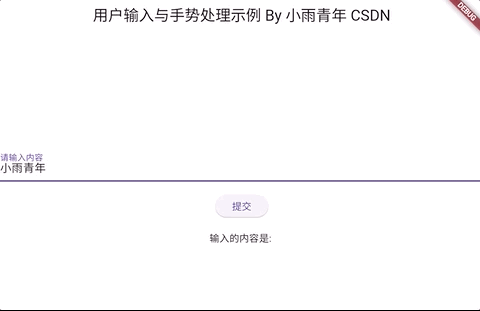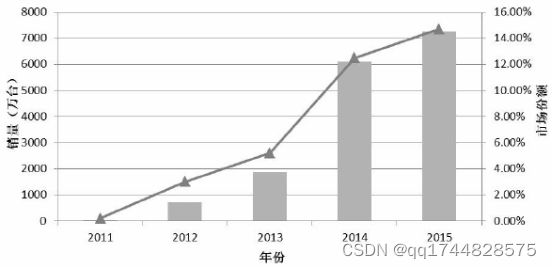前言
先来看下实现效果:
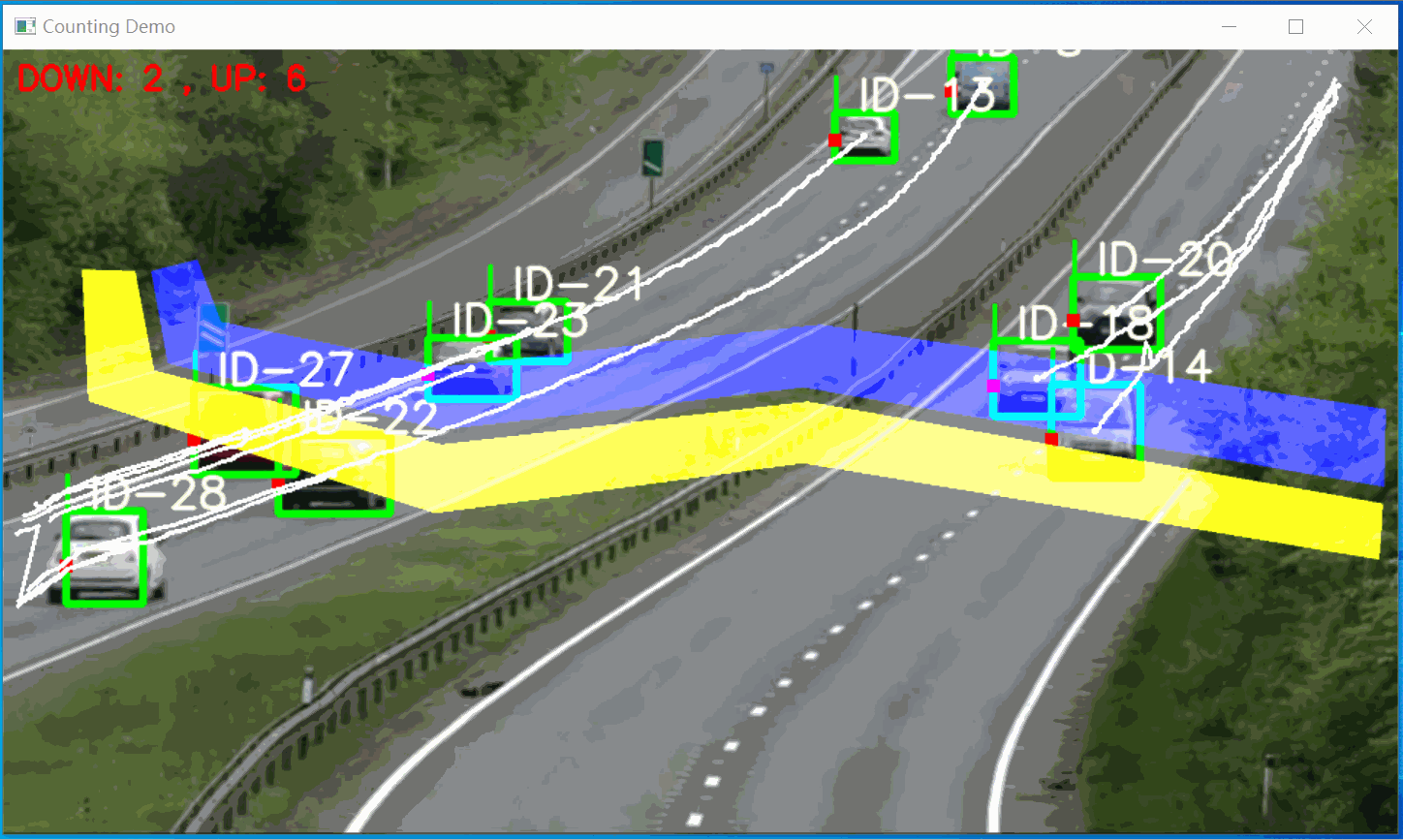
上图展示了用yolov5作为检测器,DeepSort为追踪器实现了对车流量的统计并绘制了每辆车的运行轨迹。
一、整体目录结构
下图展示了项目的整体目录结构:
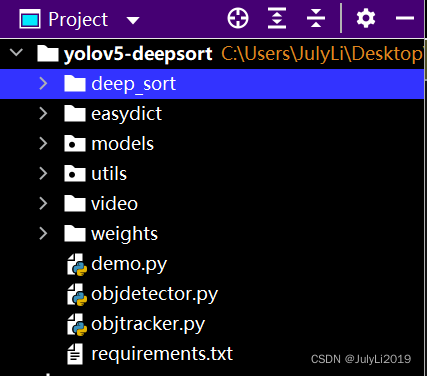
其中:
deep_sort文件下为目标跟踪相关代码;weights文件夹下存放yolov5检测模型;demo.py针对读取的视频进行目标追踪objdetector.py封装的一个目标检测器,对视频中的物体进行检测objtracker.py封装了一个目标追踪器,对检测的物体进行追踪
二、DeepSort代码参数解释
deep_sort/configs/deep_sort.yaml文件里保存了DeepSort算法的配置参数:
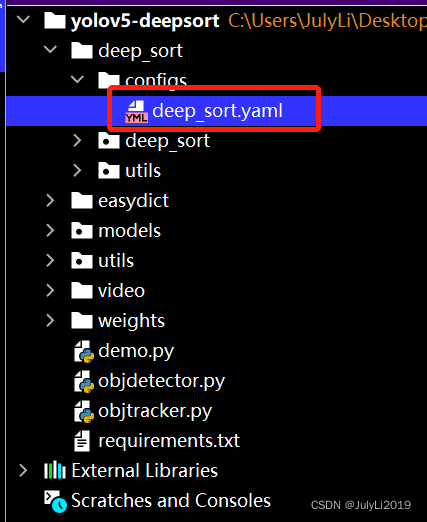
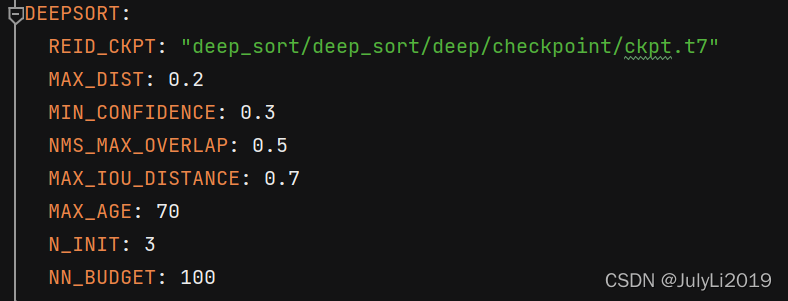
这些参数依次的含义为:
REID_CKPT:特征提取权重的目录路径MAX_DIST: 最大余弦距离,用于级联匹配,如果大于该阈值,则忽略MIN_CONFIDENCE:检测结果置信度阈值NMS_MAX_OVERLAP: 非极大抑制阈值,设置为1代表不进行抑制MAX_IOU_DISTANCE: 最大IOU阈值MAX_AGE:最大寿命,也就是经过MAX_AGE帧没有追踪到该物体,就将该轨迹变为删除态N_INIT: 最高击中次数,如果击中该次数,就由不确定态转为确定态NN_BUDGET: 最大保存特征帧数,如果超过该帧数,将进行滚动保存
三、代码展示
下面给出demo.py的代码:
import numpy as np
import objtracker
from objdetector import Detector
import cv2
VIDEO_PATH = './video/test_traffic.mp4'
if __name__ == '__main__':
# 根据视频尺寸,填充供撞线计算使用的polygon
width = 1920
height = 1080
mask_image_temp = np.zeros((height, width), dtype=np.uint8)
# 用于记录轨迹信息
pts = {}
# 填充第一个撞线polygon(蓝色)
list_pts_blue = [[204, 305], [227, 431], [605, 522], [1101, 464], [1900, 601], [1902, 495], [1125, 379], [604, 437],
[299, 375], [267, 289]]
ndarray_pts_blue = np.array(list_pts_blue, np.int32)
polygon_blue_value_1 = cv2.fillPoly(mask_image_temp, [ndarray_pts_blue], color=1)
polygon_blue_value_1 = polygon_blue_value_1[:, :, np.newaxis]
# 填充第二个撞线polygon(黄色)
mask_image_temp = np.zeros((height, width), dtype=np.uint8)
list_pts_yellow = [[181, 305], [207, 442], [603, 544], [1107, 485], [1898, 625], [1893, 701], [1101, 568],
[594, 637], [118, 483], [109, 303]]
ndarray_pts_yellow = np.array(list_pts_yellow, np.int32)
polygon_yellow_value_2 = cv2.fillPoly(mask_image_temp, [ndarray_pts_yellow], color=2)
polygon_yellow_value_2 = polygon_yellow_value_2[:, :, np.newaxis]
# 撞线检测用的mask,包含2个polygon,(值范围 0、1、2),供撞线计算使用
polygon_mask_blue_and_yellow = polygon_blue_value_1 + polygon_yellow_value_2
# 缩小尺寸,1920x1080->960x540
polygon_mask_blue_and_yellow = cv2.resize(polygon_mask_blue_and_yellow, (width // 2, height // 2))
# 蓝 色盘 b,g,r
blue_color_plate = [255, 0, 0]
# 蓝 polygon图片
blue_image = np.array(polygon_blue_value_1 * blue_color_plate, np.uint8)
# 黄 色盘
yellow_color_plate = [0, 255, 255]
# 黄 polygon图片
yellow_image = np.array(polygon_yellow_value_2 * yellow_color_plate, np.uint8)
# 彩色图片(值范围 0-255)
color_polygons_image = blue_image + yellow_image
# 缩小尺寸,1920x1080->960x540
color_polygons_image = cv2.resize(color_polygons_image, (width // 2, height // 2))
# list 与蓝色polygon重叠
list_overlapping_blue_polygon = []
# list 与黄色polygon重叠
list_overlapping_yellow_polygon = []
# 下行数量
down_count = 0
# 上行数量
up_count = 0
font_draw_number = cv2.FONT_HERSHEY_SIMPLEX
draw_text_postion = (int((width / 2) * 0.01), int((height / 2) * 0.05))
# 实例化yolov5检测器
detector = Detector()
# 打开视频
capture = cv2.VideoCapture(VIDEO_PATH)
while True:
# 读取每帧图片
_, im = capture.read()
if im is None:
break
# 缩小尺寸,1920x1080->960x540
im = cv2.resize(im, (width // 2, height // 2))
list_bboxs = []
# 更新跟踪器
output_image_frame, list_bboxs = objtracker.update(detector, im)
# 输出图片
output_image_frame = cv2.add(output_image_frame, color_polygons_image)
if len(list_bboxs) > 0:
# ----------------------判断撞线----------------------
for item_bbox in list_bboxs:
x1, y1, x2, y2, _, track_id = item_bbox
# 撞线检测点,(x1,y1),y方向偏移比例 0.0~1.0
y1_offset = int(y1 + ((y2 - y1) * 0.5))
x1_offset = int(x1 + ((x2 - x1) * 0.5))
# 撞线的点
y = y1_offset
x = x1_offset
# 然后每检测出一个预测框,就将中心点加入队列
center = (x, y)
if track_id in pts:
pts[track_id].append(center)
else:
pts[track_id] = []
pts[track_id].append(center)
thickness = 2
cv2.circle(output_image_frame, (center), 1, [255, 255, 255], thickness)
for j in range(1, len(pts[track_id])):
if pts[track_id][j - 1] is None or pts[track_id][j] is None:
continue
cv2.line(output_image_frame, (pts[track_id][j - 1]), (pts[track_id][j]), [255, 255, 255], thickness)
if polygon_mask_blue_and_yellow[y, x] == 1:
# 如果撞 蓝polygon
if track_id not in list_overlapping_blue_polygon:
list_overlapping_blue_polygon.append(track_id)
# 判断 黄polygon list里是否有此 track_id
# 有此track_id,则认为是 UP (上行)方向
if track_id in list_overlapping_yellow_polygon:
# 上行+1
up_count += 1
print('up count:', up_count, ', up id:', list_overlapping_yellow_polygon)
# 删除 黄polygon list 中的此id
list_overlapping_yellow_polygon.remove(track_id)
elif polygon_mask_blue_and_yellow[y, x] == 2:
# 如果撞 黄polygon
if track_id not in list_overlapping_yellow_polygon:
list_overlapping_yellow_polygon.append(track_id)
# 判断 蓝polygon list 里是否有此 track_id
# 有此 track_id,则 认为是 DOWN(下行)方向
if track_id in list_overlapping_blue_polygon:
# 下行+1
down_count += 1
print('down count:', down_count, ', down id:', list_overlapping_blue_polygon)
# 删除 蓝polygon list 中的此id
list_overlapping_blue_polygon.remove(track_id)
# ----------------------清除无用id----------------------
list_overlapping_all = list_overlapping_yellow_polygon + list_overlapping_blue_polygon
for id1 in list_overlapping_all:
is_found = False
for _, _, _, _, _, bbox_id in list_bboxs:
if bbox_id == id1:
is_found = True
if not is_found:
# 如果没找到,删除id
if id1 in list_overlapping_yellow_polygon:
list_overlapping_yellow_polygon.remove(id1)
if id1 in list_overlapping_blue_polygon:
list_overlapping_blue_polygon.remove(id1)
list_overlapping_all.clear()
# 清空list
list_bboxs.clear()
else:
# 如果图像中没有任何的bbox,则清空list
list_overlapping_blue_polygon.clear()
list_overlapping_yellow_polygon.clear()
# 输出计数信息
text_draw = 'DOWN: ' + str(down_count) + \
' , UP: ' + str(up_count)
output_image_frame = cv2.putText(img=output_image_frame, text=text_draw,
org=draw_text_postion,
fontFace=font_draw_number,
fontScale=0.75, color=(0, 0, 255), thickness=2)
cv2.imshow('Counting Demo', output_image_frame)
cv2.waitKey(1)
capture.release()
cv2.destroyAllWindows()
若需要更改模型,只需要更改objdetector.py下面的给出的部分:
OBJ_LIST = ['person', 'car', 'bus', 'truck']
DETECTOR_PATH = 'weights/yolov5m.pt'
总结
本篇文章给出了基于yolov5与DeepSort的流量统计与轨迹跟踪的实例,源码地址:
https://github.com/JulyLi2019/yolov5-deepsort/releases/tag/V1.0



